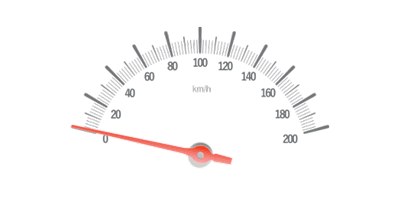If you think your life is tough now, take heart—you could have been born as a piece of automotive audio equipment. We expect the sound systems in our cars to last for decades, endure a combination of Death Valley heat and Alaskan cold, shrug off the occasional splash of water or soda, and still produce home-theater-quality sound while using much less power than you can get out of a wall plug. Oh, and it all needs to be affordable.
No surprise that many cars come off the production line with audio systems that can’t match that near-impossible list of requirements. For much of the time, it’s sound quality that doesn’t cut. Going back 30 years ago, the fix was simplicity itself: remove the standard-sized head unit and replace it with something else. Things aren’t as easy nowadays. More often than not, the “head unit” is now part of a larger system that controls everything from navigation to air conditioning. Removing or replacing it can be cumbersome.
This doesn’t mean you can’t improve your car’s sound, however. The best way to do it: a good set of aftermarket speakers. A little money and effort spent here can go a long way. Expect to hear more detail, experience a more defined sound stage, and endure less distortion at the extremes of volume. I’ve come up with some of the best ways to make that happen, whether your budget is modest or ambitious. Let’s rock.
- Best Car Speakers
- Most Affordable Rock Music Upgrade: Rockford Fosgate Punch 4-Pack
- Best Value for Small Cars: Pioneer TS-A1676R 6.5
- Best Car Speakers for Demanding Ears: Focal ES 165
- Best For Cars That Can Take an Aftermarket Amplifier: Kicker CS Series
- Best Quick Fix for Troubled Car Audio: Kenwood KFC-1666s
- Size and Location
- Woofers and Tweeters
What To Consider When Upgrading Your Car Speakers
When in doubt, just remove and measure your existing speakers, then get something the same size or similar. There's a lot of "slack" in many car speaker installs, and there's also a variety of “standard” sizes that should work in many cars. Don’t forget about speaker depth; that’s often the most important measurement of all. Most of these items are best installed by a competent local shop.
While it’s true that you can get pretty good sound from single-cone speakers mounted around the car, upgrading to “component” speakers will make a drastic difference that you can easily hear. Different frequencies of sound are best reproduced by speakers that are optimized for those frequencies, so heavy bass is best in a large “woofer,” while piercing highs are reproduced most accurately by small dome “tweeters.”
Want to up the ante a bit? Adding a subwoofer (or two) will reproduce the lowest bass from today’s hip-hop and R&B while also offering a subtle fill to classical (or classic rock) music. Mid-bass speakers add detail that woofers and subwoofers miss, while mid-range speakers provide additional clarity to vocals, guitars, and woodwinds.
Adding all of these can take up extra space, so if you don’t have it to spare look for “co-axial” or “full-range” products that mount different-sized speakers on top of one another to fit into smaller enclosures. It’s not an ideal way to do it, but the results are still better than what you’d get from a single speaker.
- Source and Signal
Make sure your speakers are powered by a conventional wire with positive and negative leads. In some cases, your car may use optical cable or a “common ground” wiring system; consult an expert if that’s the case. Some German and British luxury cars can use a converter box of sorts to facilitate the installation of traditional speakers. When in doubt, call a shop, or your dealership, and ask.
- Choosing Your Upgrade
- How We Selected These Car Speakers
If you’re not able to swap out all your speakers at once, which ones should you choose? Go big first! In other words, replace the largest speakers in your car with the smaller ones. The larger ones are tasked with making most of the noise in your cockpit, so an improvement will be more audible than if you swap out the tweeters in your car’s A-pillar, for example.
Assuming you’re also the driver, it’s also worth spending your money upfront first. In some cases, even the passengers in the rear will appreciate your doing so, as many systems have a heavy front bias regardless of what you do with the fader knob.
As a lifetime audiophile and sound-system builder in both home and automotive, I’ve built, installed, and listened to dozens of high-end car stereo speaker systems over the past three decades. Having listened to and examined many of these systems, I’ve seen—and heard—first-hand what works and what doesn’t. I’ve used that experience to select and recommend the speakers below.


